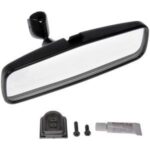Blue or grey smoke billowing from your car engine is a troubling sign for any driver. It typically indicates that your engine is burning oil, a problem that can lead to significant damage if left unaddressed. This article will delve into the common causes of this issue and guide you on how to approach repairing smoke emanating from your car engine.
Understanding why your car engine is producing blue or grey smoke is the first step in addressing the problem. This type of smoke is a tell-tale sign that engine oil is making its way into the combustion chamber. Here, it’s burned along with the fuel, resulting in the visible smoke and often accompanied by a noticeable smell of burning oil. You might also experience other symptoms like engine misfiring upon ignition or unusual shaking when your vehicle is idling.
While both blue and grey smoke often point to similar underlying issues, identifying the exact cause is crucial for effective repair. The leaks that cause oil to burn are generally due to wear and tear on various engine components. Let’s explore the most common culprits:
Key Causes of Blue/Grey Smoke and How to Address Them
1. Worn Pistons and Piston Rings
Pistons within your engine cylinders rely on piston rings to create a tight, airtight seal. These rings prevent oil from leaking into the combustion chamber. Over time, and with normal engine operation, these rings can wear down. When piston rings become worn, they lose their ability to maintain a perfect seal, allowing engine oil to seep past them and into the fuel mixture. This oil is then burned during combustion, resulting in blue smoke that you might observe from your exhaust or even from under the bonnet.
Repairing damaged pistons and piston rings is a complex and labor-intensive job. It often requires significant engine disassembly and specialized tools. Due to the intricate nature of this repair, it is highly recommended to seek assistance from certified professionals. Taking your car to a reputable mechanic, such as an RAC approved garage, ensures that the repairs are carried out correctly and effectively, preventing further engine damage.
2. Damaged Valve Stem Seals
Engine valves play a vital role in regulating the precise mixture of fuel and air that enters the cylinders for combustion. Valve stem seals are small components designed to prevent oil from leaking down the valve stems and into the combustion chamber. These seals are typically made from durable, high-strength rubber to withstand the harsh engine environment. However, extreme temperatures and general wear and tear over time can cause these seals to become brittle, cracked, or worn.
When valve stem seals are compromised, they can no longer effectively block oil leakage. Consequently, oil can seep past the damaged seals and enter the combustion chamber, leading to blue smoke. Replacing valve stem seals is a task that often requires specialized tools and mechanical expertise. Mechanics frequently use valve spring compressors to access and replace the seals without removing the cylinder head in some cases, making the repair process less invasive but still requiring professional skill.
3. Malfunctioning PCV Valve
The Positive Crankcase Ventilation (PCV) valve is an essential part of your engine’s emission control system. Its function is to vent gases, including exhaust gas and unburned fuel, from the engine crankcase. This prevents pressure buildup and redirects these gases back into the intake manifold to be re-burned, reducing emissions.
If the PCV valve becomes stuck in the closed position, it can disrupt the engine’s ventilation system. This malfunction leads to a buildup of pressure and an improper mixture of oil, air, and other gases within the engine. When this contaminated mixture is combusted, it can result in blue smoke being emitted from the exhaust.
Fortunately, fixing a PCV valve issue is generally less complex and costly than dealing with piston rings or valve stem seals. In most cases, resolving a malfunctioning PCV valve involves a simple replacement of the valve itself rather than a complicated repair procedure.
4. Worn Engine Oil Seals
As engine oil circulates throughout your engine to lubricate its many moving parts, it relies on a network of seals to keep it contained within designated pathways. These engine oil seals are strategically placed to prevent oil from leaking out of the oil system and into other areas of the engine or outside the engine altogether. Over time, these seals can degrade due to heat, pressure, and age, leading to wear and tear.
When engine oil seals become worn or damaged, they can no longer effectively prevent oil leaks. This can result in oil seeping into areas where it shouldn’t be, potentially reaching the combustion chamber and burning, producing blue smoke. Oil leaks from worn engine seals can also manifest as visible oil spillages under your car.
If you observe blue smoke emanating from your engine or notice any signs of oil leaks, it’s crucial to address the issue promptly. Visiting a trusted garage as soon as possible is advisable. Early diagnosis and repair can prevent more extensive engine damage and ensure your vehicle remains in good working order.
In conclusion, smoke from your car engine, particularly blue or grey smoke, is a clear indicator of engine oil burning, often due to leaks from worn components like piston rings, valve stem seals, PCV valves, or engine oil seals. While some issues like a PCV valve replacement might be relatively straightforward, most causes of engine smoke necessitate professional diagnosis and repair. Addressing these issues promptly by consulting with a qualified mechanic is essential to maintain your engine’s health and prevent more serious and costly problems down the road.

